When it comes to cooking meat, the right cut can make or break your dish. Each cooking method – grilling, smoking, or roasting – works best with specific cuts based on fat content, connective tissue, and tenderness. Here’s a quick guide:
- Grilling: High-heat cooking is perfect for tender, marbled cuts like ribeye, New York strip, and filet mignon. Pork chops and tenderloin also excel here.
- Smoking: Tougher cuts with more fat and connective tissue, like brisket, chuck roast, or pork shoulder, transform into tender, flavorful dishes when cooked low and slow.
- Roasting: Even heat works well for large cuts like prime rib, strip loin, or pork loin roast. Leaner cuts like tenderloin cook quickly at higher temperatures.
For best results, match the cut to the cooking method, use a meat thermometer to check internal temperatures, and let the meat rest before serving. Whether you’re grilling steaks, smoking brisket, or roasting a prime rib, the right preparation ensures juicy, flavorful results every time.
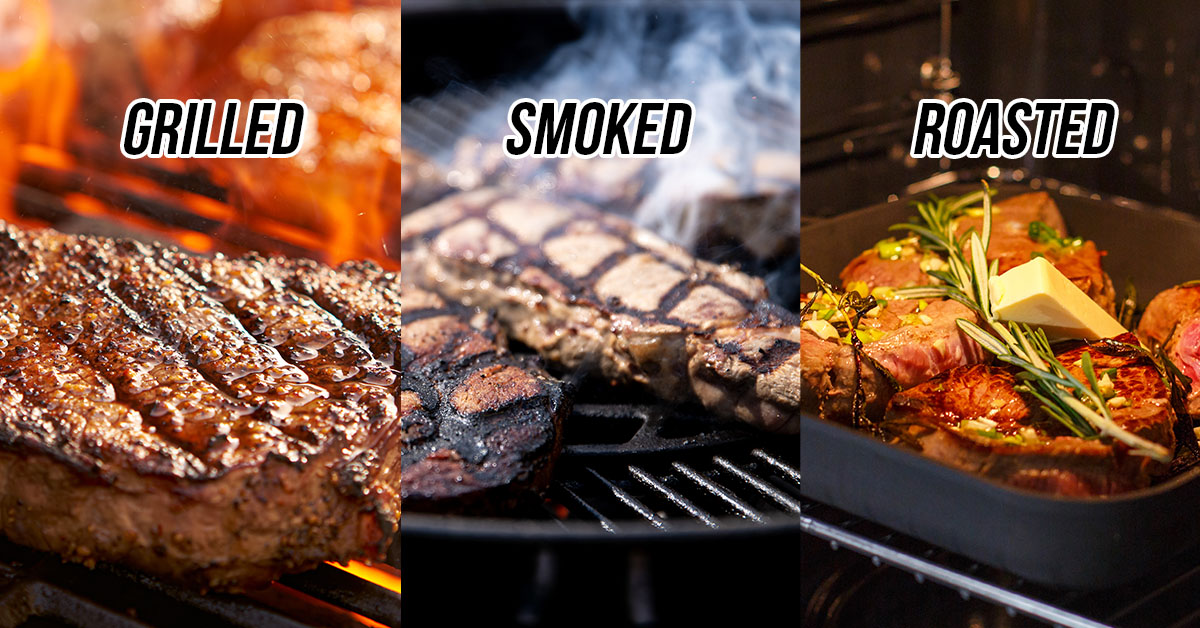
How To Grill ANY Cut Of Beef (Tough Cuts, Brisket, Short Rib, Chuck Roast)
How Different Cooking Methods Work with Meat Cuts
Cooking meat isn’t just about heat; it’s about knowing how heat interacts with fat, connective tissue, and muscle fibers. Picking the right cooking method for each cut is essential to bring out the best flavors and textures. Whether you’re grilling, smoking, or roasting, each technique has its own way of transforming meat.
Cuts with more fat thrive under high heat, like grilling, as the fat melts and adds flavor. On the other hand, connective tissue-rich cuts need time and low temperatures to break down tough fibers into tenderness. Thicker cuts benefit from a seared exterior and a rare to medium-rare center, while thinner cuts are ideal for quick, high-heat cooking. Let’s dive into how grilling, smoking, and roasting work their magic on meat.
Grilling: High Heat for Quick Cooking
Grilling is all about intense heat – around 450°F – that sears the meat quickly. This high heat triggers the Maillard reaction, creating that irresistible caramelized crust while locking in juices.
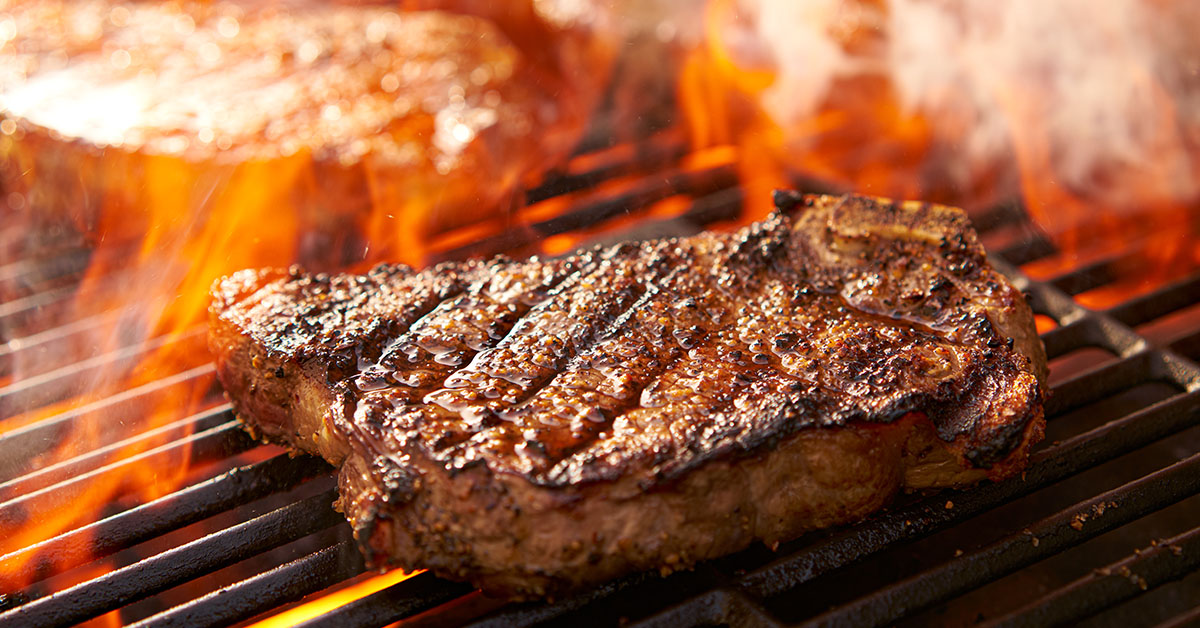
Cuts with good marbling, like ribs or loins, excel on the grill because the fat melts fast, basting the meat naturally and keeping it moist. For tender cuts that cook quickly, grilling is the perfect choice.
Smoking: Low Heat for Deep Flavor
Smoking takes a slower, more patient approach, using low temperatures between 225°F and 275°F over several hours – sometimes up to 10 hours or more. This method is ideal for tougher cuts with lots of connective tissue and fat.
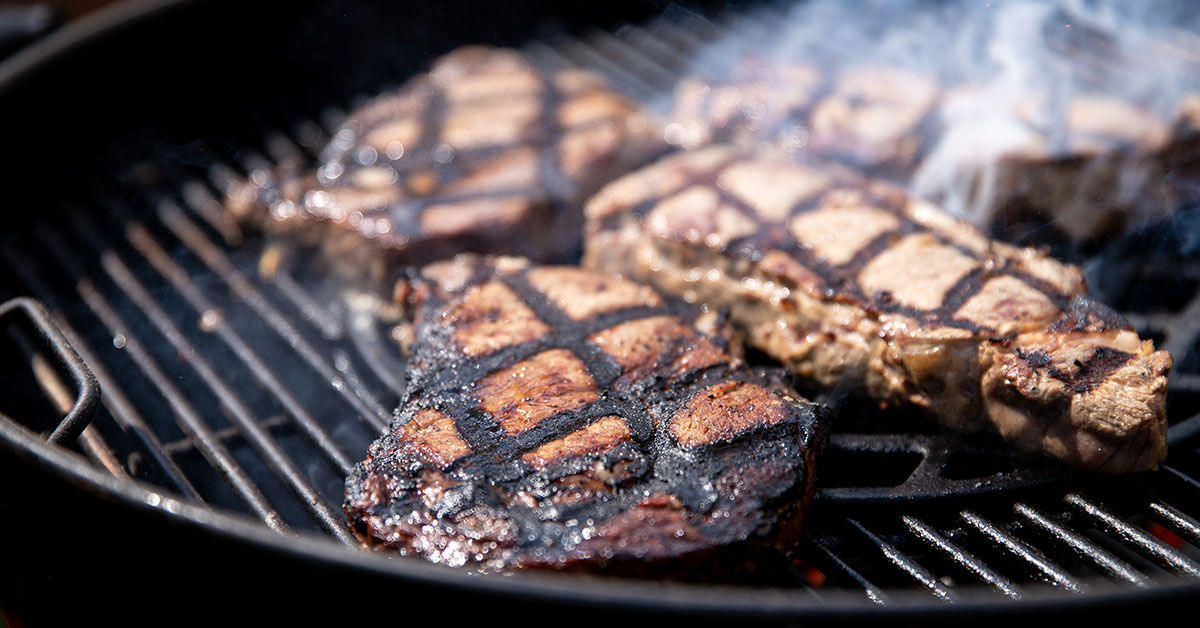
The slow cooking process transforms collagen into gelatin, making the meat tender and flavorful. For example, smoking a brisket often starts at 225°F until it reaches 160°F internally (about six hours), then continues at 275°F until the meat reaches 200°F. The result? A deeply flavored, melt-in-your-mouth cut.
Roasting: Even Heat for Large Cuts
Roasting provides steady, even heat, making it perfect for large cuts of meat. Typically done at moderate temperatures, such as 275°F for a prime rib, roasting ensures the heat penetrates the meat uniformly without burning the outside.
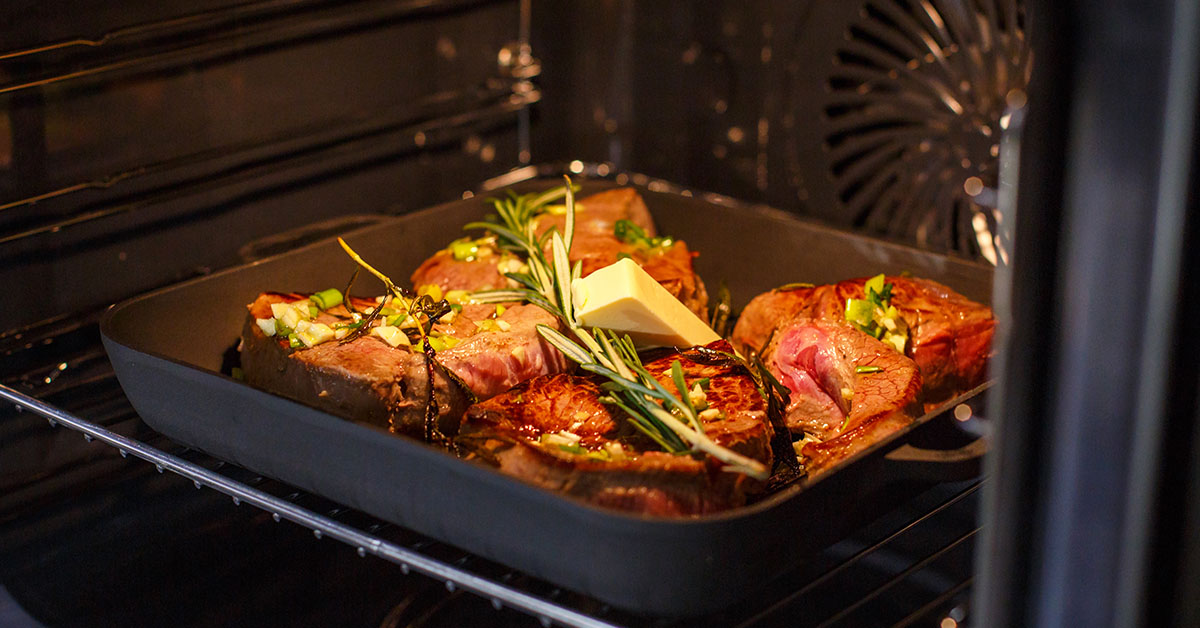
This method is especially effective for thick cuts that require consistent cooking. The controlled environment of the oven allows the exterior and interior to cook evenly, resulting in a perfectly done roast every time.
Top Cuts for Grilling
Grilling success starts with picking the right cuts – ones that can handle high heat while staying juicy and flavorful.
When selecting meat for the grill, look for cuts with evenly distributed, creamy fat (marbling). Craig A. Morris, Deputy Administrator of the AMS Livestock Poultry and Seed Program, puts it simply:
"Marbling is what gives beef its flavor, juiciness and tenderness."
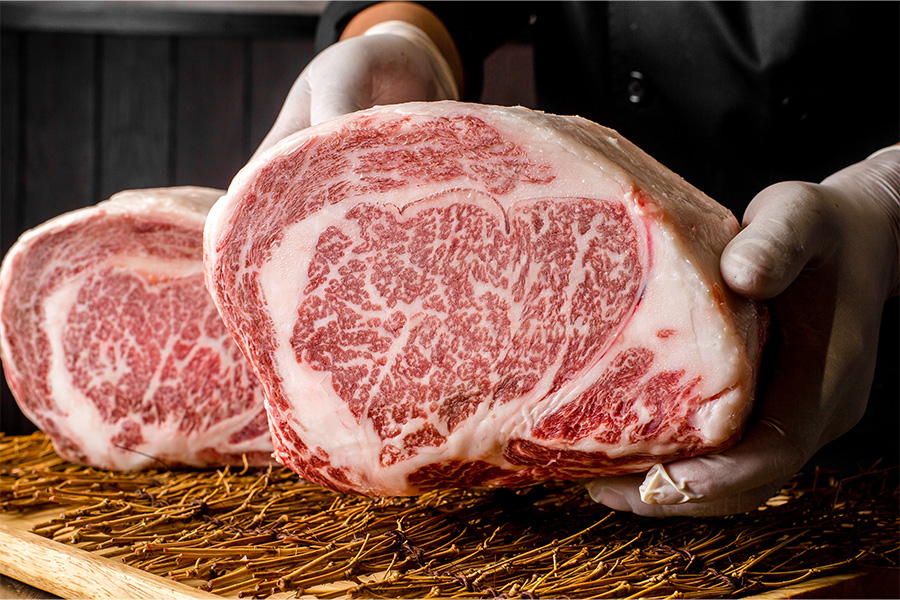
Aim for bright red meat with thin streaks of creamy white fat. Avoid thick fat deposits, as they often indicate extra connective tissue that won’t break down quickly during grilling.
Best Beef Cuts for Grilling
Premium cuts like ribeye, New York strip, and filet mignon are grill favorites. Their natural tenderness and marbling melt during cooking, keeping the meat juicy and flavorful. USDA Prime beef, known for its exceptional marbling, makes up only 2–3% of beef on the market. If that’s out of reach, USDA Choice – about 45% of graded beef – offers great flavor at a more accessible price point.
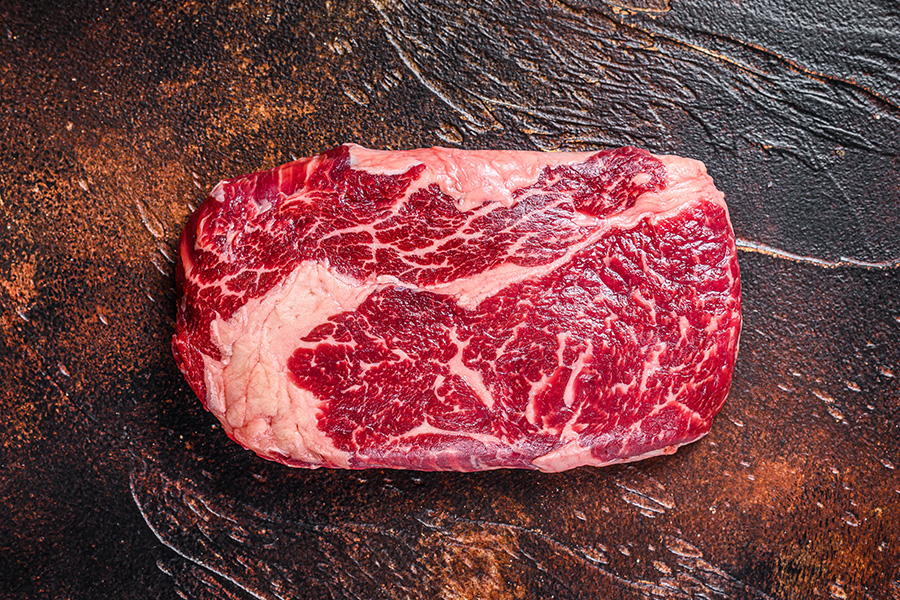
Budget-friendly options like flank steak, skirt steak, and kabob cuts can also deliver excellent results. These tougher cuts benefit from a little extra attention.
Marinating is key for these cuts. A simple marinade of oil, citrus juice, and soy sauce works wonders. Let the meat soak for 30 minutes to overnight to boost flavor and tenderness. Before grilling, pat the steaks dry with paper towels for better browning, and use a meat thermometer to ensure they’re cooked to your preferred doneness.
Pork is another grilling favorite, offering several cuts that perform beautifully over the flames.
Best Pork Cuts for Grilling
Pork chops and tenderloin are standout choices for grilling. Bone-in pork chops, especially those about one inch thick, tend to stay juicier, as the bone helps retain moisture and adds flavor.
Proper preparation is key for pork. Brining the meat for a couple of hours before grilling can add moisture and seasoning.
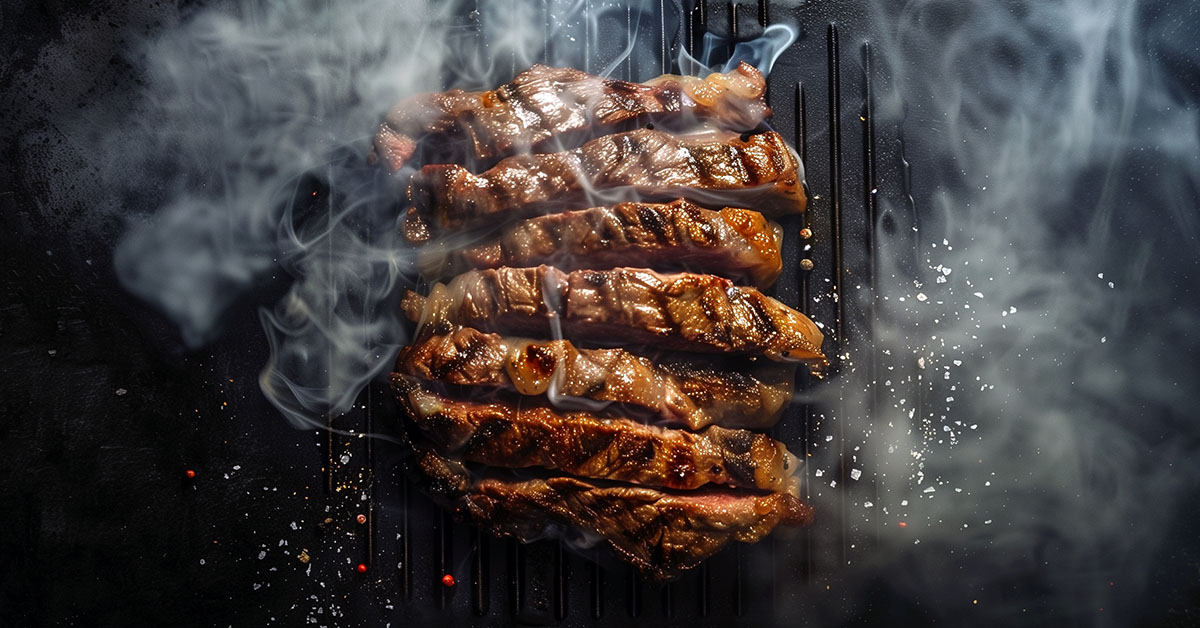
When grilling pork, technique matters:
- Trim excess fat to prevent flare-ups.
- Season with salt, pepper, and herbs.
- Sear over high heat for grill marks, then finish cooking over medium heat.
| Cut | Internal Temperature | Cooking Time |
|---|---|---|
| Bone-In Pork Chops (¾-inch) | 145°F | 8–12 minutes |
| Boneless Pork Chops (¾-inch) | 145°F | 8–12 minutes |
| Pork Tenderloin (1½-inch) | 145°F | 20–30 minutes |
Temperature is the key to perfect pork. Use a digital meat thermometer to confirm when lean cuts reach 145°F. After grilling, let pork chops rest for about 5 minutes so the juices can redistribute, ensuring every bite is tender and flavorful.
Top Cuts for Smoking
Smoking transforms tough cuts of meat into tender, flavorful masterpieces. The key? Choosing cuts loaded with fat and connective tissue, which thrive under the low-and-slow magic of smoking.
Rich Parente, Chef and Owner of Clock Tower Grill, sums it up perfectly:
"There really are no bad tough cuts for a smoker since all that fat and connective tissue helps the meat stay juicy over a low-and-slow cooking process."
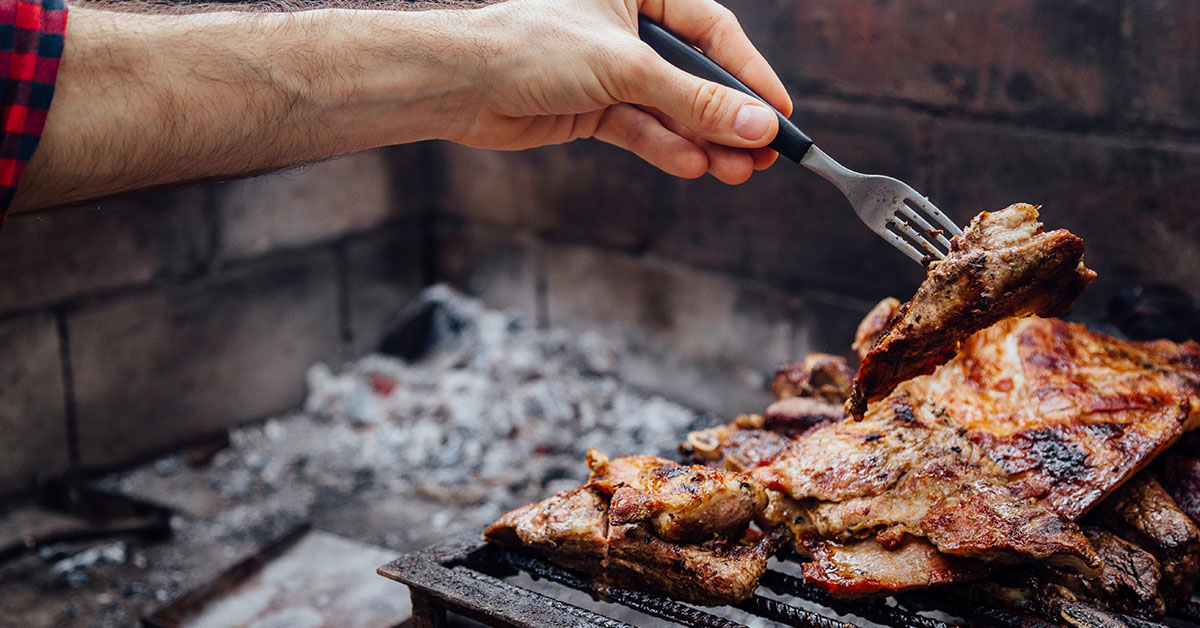
As the meat smokes, muscle fibers break down and collagen melts into gelatin, delivering that melt-in-your-mouth texture everyone craves. Even bones, which are about 40% collagen, contribute deep, rich flavors when smoked slowly.
Best Beef Cuts for Smoking
Some beef cuts are practically made for smoking, thanks to their marbling and structure.
Brisket is the undisputed champion. Smoking a brisket takes time – 12 to 16 hours at 225°F to 250°F – but the payoff is worth it. The goal is to reach an internal temperature of around 203°F for that perfect, tender finish.
Chuck roast is another excellent choice, offering a similar texture and flavor profile to brisket but at a more budget-friendly price. Its marbled fat and tough fibers make it ideal for smoking.
Beef short ribs are a favorite among pitmasters. Their high fat content and connective tissue create a rich, meaty flavor when smoked at 250°F until they’re fork-tender.
Tri-tip, while leaner, is a great alternative for those looking for a quicker, flavorful smoke.

Best Pork Cuts for Smoking
Pork cuts also shine in the smoker, delivering incredible flavor and tenderness.
Pork shoulder – often labeled as "Boston butt" in stores – is the gold standard for pulled pork. Its fat content and sturdy fibers make it perfect for long smoking sessions.
Pork ribs are another standout. Whether you’re smoking spare ribs, baby back ribs, or St. Louis-style ribs, the result is always juicy, tender meat with deep flavor.
Here’s a quick reference for smoking popular pork cuts:
| Cut | Smoking Temperature | Internal Target (°F) | Cooking Time |
|---|---|---|---|
| Pork Shoulder | 225°F–250°F | 195°F to 205°F | 8 to 12 hours |
| Spare Ribs | 225°F–250°F | 190°F to 203°F | 5 to 6 hours |
| Baby Back Ribs | 225°F–250°F | 190°F to 203°F | 5 to 6 hours |
When smoking, always rely on temperature rather than time to determine doneness. Once the meat is done, let it rest – wrapped – for at least an hour. This step allows the juices to redistribute, ensuring every bite is juicy and flavorful.
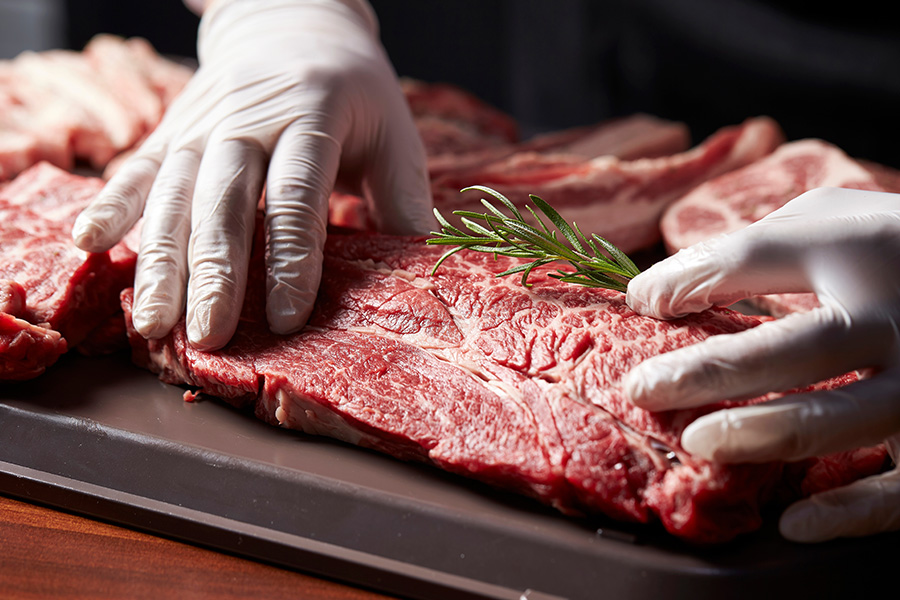
For leaner cuts like pork loin, consider using a brine or marinade beforehand to lock in moisture during the smoking process. Pairing the right cuts with proper smoking techniques guarantees mouthwatering results every time.
sbb-itb-5ae85c5
Top Cuts for Roasting
When it comes to cooking large cuts of meat with precision and consistency, roasting takes the crown. This method uses steady, even heat to thoroughly cook meat while locking in moisture, making it especially effective for transforming tougher cuts into tender, flavorful dishes.
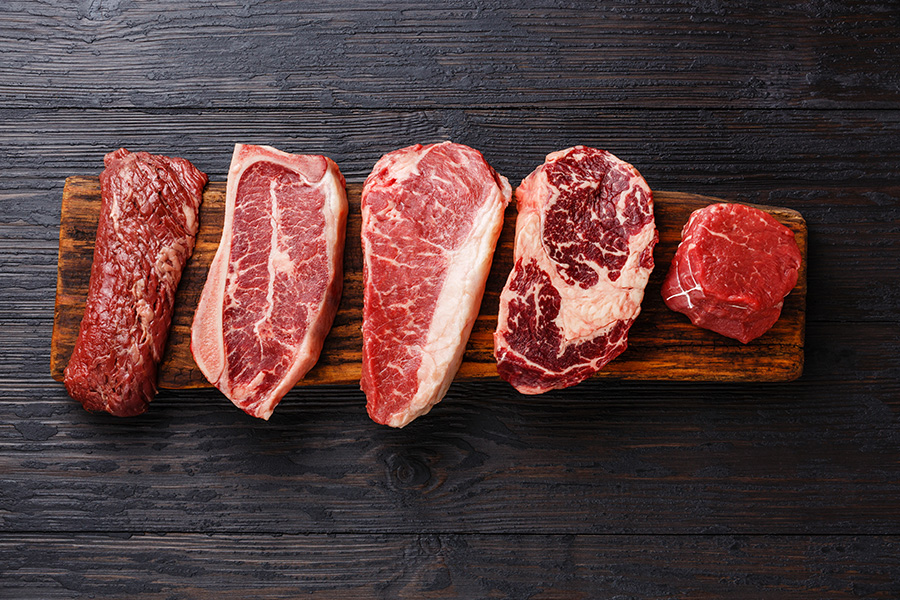
Best Cuts for Roasting
- Prime Rib Roast
Prime rib roast is a standout option for roasted beef. Thanks to its rich marbling, the fat melts during cooking, infusing the meat with incredible flavor and a buttery texture. As Chef David Rose, Executive Chef for Omaha Steaks, puts it:
"Well-marbled intramuscular fat that renders into the roast for the perfect bite."
- Strip Loin Roast
If you’re looking for a more affordable alternative, the strip loin roast delivers bold beef flavor and excellent tenderness. It’s a solid substitute for prime rib without breaking the bank. - Chateaubriand Tenderloin Roast & Shoulder Petite Roast
For those craving premium tenderness, the chateaubriand tenderloin roast is a top-tier option. On the other hand, the shoulder petite roast offers a similar depth of beef flavor and texture at nearly half the cost. Chef David Rose notes that it’s "a great beef flavor at a lower cost".
Pork Cuts
Pork also shines when roasted.
- Pork Loin Roast is perfect for feeding a crowd, offering a balance of flavor and size.
- Pork Tenderloin, as lean as skinless chicken breast, cooks quickly at high temperatures (425°F–450°F) and is ready in just 20 to 27 minutes.
- Pork Shoulder benefits from a slow, low-temperature roast to render its fat, requiring about 45 minutes per pound at 350°F.
- Pork Leg (Ham) is another excellent choice, providing lean, easy-to-carve slices that can be stuffed for special occasions.
Roasting Guide for Best Results
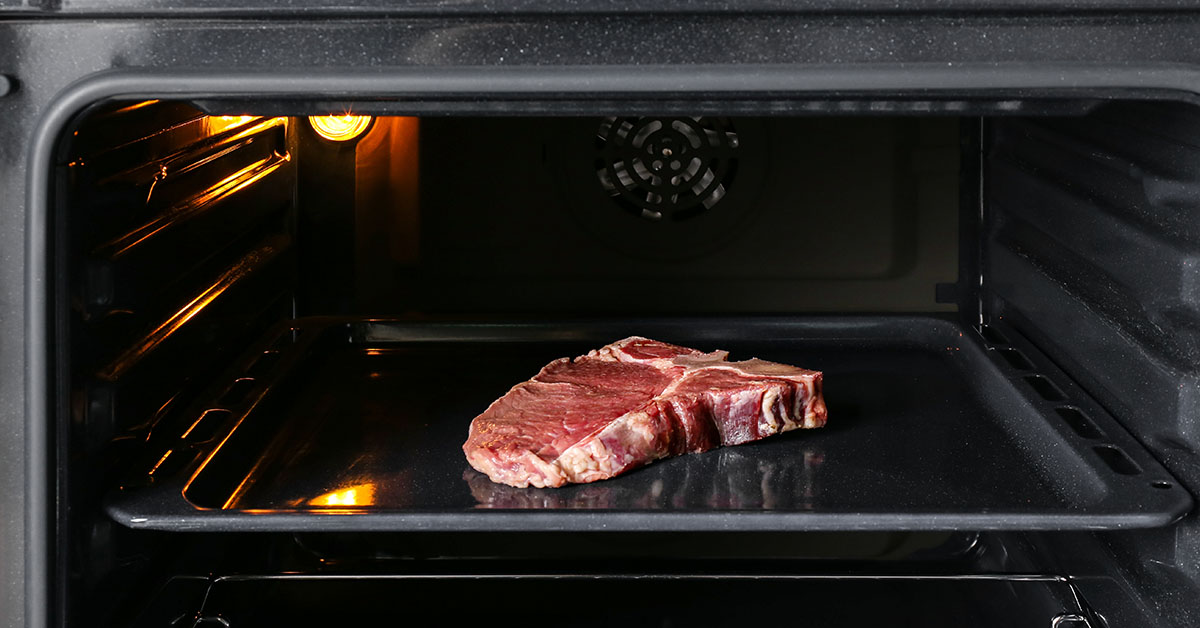
| Cut | Oven Temperature | Cooking Time | Internal Target |
|---|---|---|---|
| Beef Rib Roast (bone-in) | 325°F | 23–25 min/lb | 120°F for medium-rare |
| Beef Tenderloin (whole) | 425°F | 45–60 min total | 135°F for medium-rare |
| Pork Loin Roast | 350°F | 20 min/lb | 145°F |
| Pork Tenderloin | 425°F–450°F | 20–27 min total | 145°F |
| Pork Shoulder | 350°F | 45 min/lb | 145°F–180°F |
Tips for Roasting Success
The key to a perfectly roasted cut lies in preparation and timing. Start by letting the meat come to room temperature before cooking. Season it the night before with salt and pepper to create a dry brine. For an extra layer of flavor, sear the meat at high heat to develop a crust before lowering the temperature for even cooking.
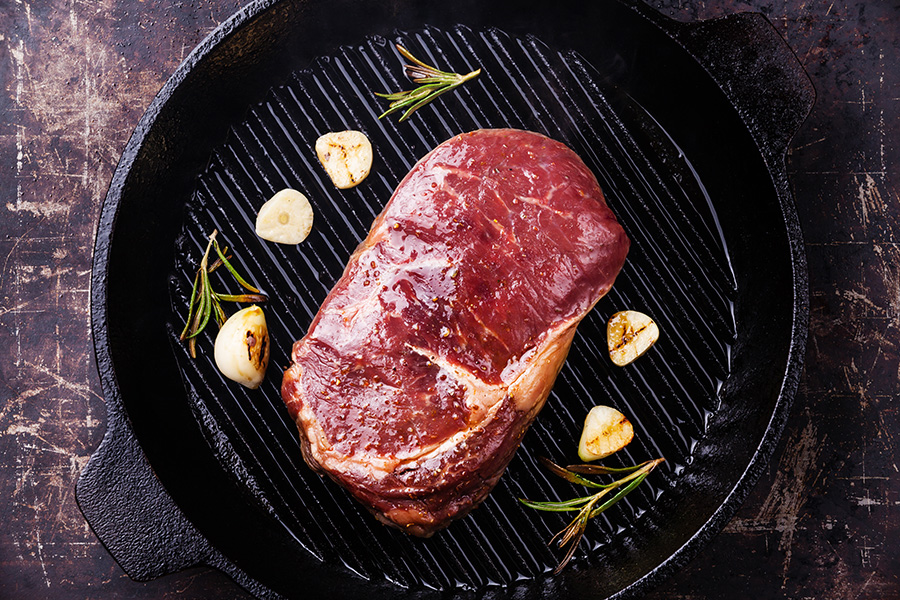
Always use a meat thermometer in the thickest part of the cut (avoiding bones) to ensure accuracy. Finally, allow the meat to rest for 30 minutes before carving. This step redistributes the juices, ensuring every slice is moist and packed with flavor. Matching the right cut with the right technique can elevate any meal to a whole new level.
Finding Good Value Cuts and How to Prepare Them
Affordable cuts can deliver incredible flavor and tenderness when prepared with the right techniques. Knowing which cuts offer the most bang for your buck and how to handle them can turn even tougher fibers into mouthwatering meals. Let’s dive into some practical shopping tips, key quality markers, and preparation methods to make budget-friendly cuts shine.
Spotting Good Value Cuts
Smart Shopping Tips
Buying whole cuts and trimming them yourself is usually cheaper than opting for pre-cut portions – you can save a dollar or two per pound by slicing steaks at home [51, 53]. Family packs or bulk bundles are another great way to save money; just freeze the extras for later. Don’t underestimate the value of chatting with your butcher – they can recommend affordable cuts and the best ways to cook them, thanks to their deep knowledge of different meat types.
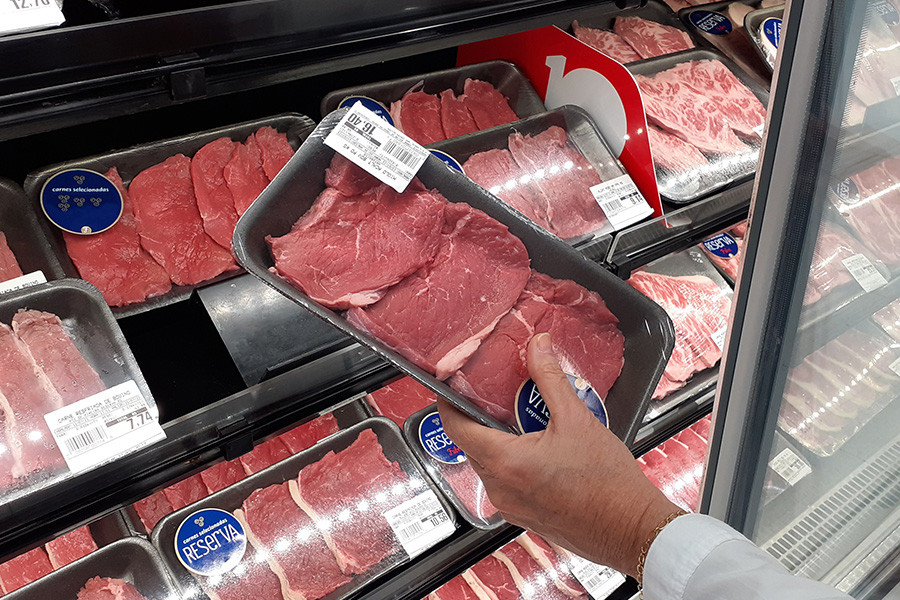
What to Look For
When evaluating cuts of meat, keep an eye out for these quality indicators:
- Beef: Look for a deep red color with fine white marbling.
- Pork: A reddish-pink hue with good marbling is ideal.
- The meat should spring back when pressed and feel dry rather than sticky.
- Fresh meat will have a neutral or slightly sweet scent – avoid anything with a sour odor.
Budget-Friendly Cuts to Try
For beef, here are some wallet-friendly options:
- Chuck eye steaks: Packed with flavor, similar to ribeye but far less expensive.
- Flat iron steaks: Tender, well-marbled, and perfect for grilling.
- Flank steak: Bold in flavor and versatile when cooked properly.
- Skirt steak: Boneless and full of taste.
- Chuck roast: Perfect for slow cooking, delivering rich, tender results.
For pork, consider these affordable picks:
- Pork shoulder: Ideal for slow cooking and loaded with flavor.
- Country-style pork ribs: Cheaper than baby back ribs but equally tasty.
Whole chickens and bone-in, skin-on chicken thighs are also economical and flavorful protein options.
Once you’ve chosen your cut, the next step is preparing it to enhance its tenderness and flavor.
How to Prepare Tougher Cuts
With the right techniques, budget cuts can rival restaurant-quality meals. As culinary producer Kelli Foster explains:
"Tough cuts of meat, like chuck roast, brisket, hanger steak, and flank steak, aren’t just cheaper than their leaner counterparts – when cooked just right, they deliver even more flavor."
Salt: The Ultimate Tenderizer
Salt naturally breaks down proteins in meat, creating a more tender texture. For the best results, salt your meat at least an hour before cooking. Rinse off the excess, pat it dry, and then cook. Want even better results? Salt the meat the day before [55, 58].
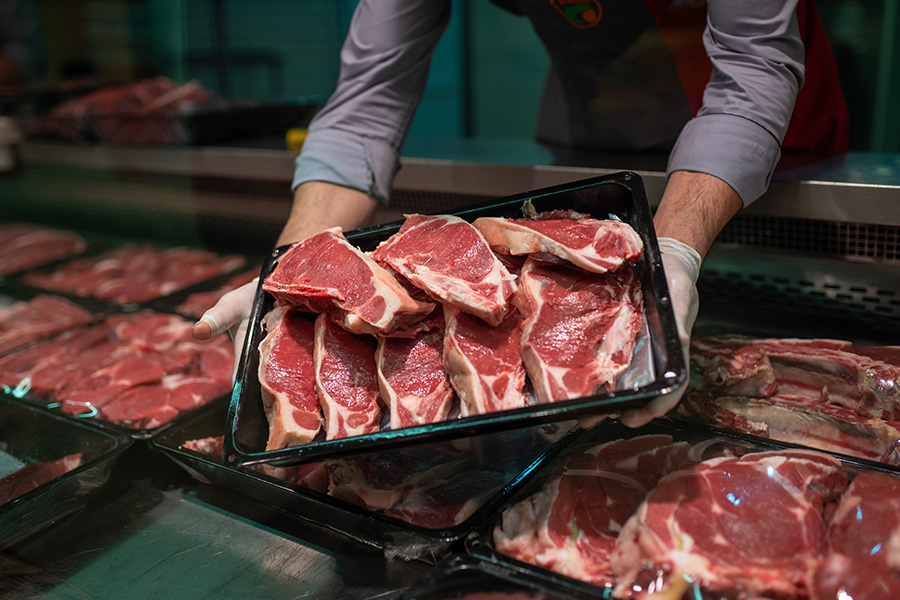
Marinating for Flavor and Tenderness
Acidic marinades – made with ingredients like vinegar, citrus juice, or buttermilk – help break down muscle fibers. Thin cuts like skirt, hanger, and flank steaks should only marinate for about two hours to avoid becoming mushy. For enzymatic marinades (using kiwi, papaya, or pineapple), stick to 1–2 tablespoons per cup of marinade and don’t exceed 12 hours.
Tenderizing with Tools
Physically tenderize meat by pounding it between plastic wrap or wax paper using a meat mallet. Another option is scoring the meat – make shallow cuts against the grain in one direction, then repeat perpendicular to the first set. This helps break up long muscle fibers, making the meat easier to chew.
Cook Low and Slow
Tough cuts like brisket, chuck roast, and bottom round benefit from slow cooking, which breaks down connective tissues and releases collagen. Keep the temperature between 220°F and 250°F, and give it plenty of time to achieve tender, flavorful results.
Rest and Slice Properly
After cooking, let the meat rest to allow juices to redistribute – about 5 minutes per inch for steaks and 10 minutes per pound for roasts. Always slice against the grain to maximize tenderness [56, 58].
As the Kansas Farm Food Connection puts it:
"With a little cooking know-how, a sirloin steak can be just as delicious as filet mignon. By choosing the more inexpensive cuts of meat and preparing them properly, you can enjoy your meat-based meals for less."
Conclusion: Match Your Cut to Your Cooking Method
Choosing the right cut for your cooking method isn’t just a tip – it’s the backbone of outstanding barbecue and grilling. As Aaron Pape explains:
"The more tender and fatty the cut, the faster and hotter it can be cooked. The tougher and leaner the cut, the slower and lower it should be cooked."
Cuts that need a "low and slow" approach can deliver incredible flavor when handled correctly.
Tender cuts, with less connective tissue, thrive under high heat, while tougher cuts require patience and low temperatures to break down properly. This pairing is the secret to getting the best results. For instance, if you try grilling a brisket over high heat, you’ll end up with a tough, rubbery mess that no seasoning can save. But smoke that same brisket slowly, and the connective tissue will break down, leaving you with a juicy, flavorful masterpiece.
Pay attention to marbling, tenderness, and fat content. Well-marbled cuts shine on the grill because the fat keeps them moist, while leaner, tougher cuts benefit from slow cooking, which turns connective tissue into a rich, gelatin-like flavor.
And don’t forget: always use a meat thermometer to check the internal temperature, and let the meat rest to allow the juices to redistribute evenly.
FAQs
How can I keep meat juicy and flavorful when grilling, smoking, or roasting?
To keep your meat tender and full of flavor, it’s all about mastering the right techniques for each cooking method. For smoking and roasting, low and slow cooking is your best friend – it helps retain moisture and avoid dryness. A meat thermometer is a must-have tool to ensure you cook to the ideal internal temperature without overdoing it.
Marinating your meat or giving it a light coat of oil before cooking can work wonders for sealing in moisture and amplifying flavor. When grilling, resist the urge to flip your meat too often; every turn risks losing those precious juices. And don’t skip the resting step – after cooking, loosely cover the meat with foil and let it sit for a few minutes. This allows the juices to settle back into the meat, giving you a tender and flavorful bite every time.
How does marbling impact the flavor and cooking method of different meat cuts?
Marbling, those streaks of fat running through the meat, is what makes a cut flavorful, tender, and juicy. As the meat cooks, the fat melts, essentially self-basting the meat and boosting its moisture and taste.
Cuts with more marbling, like ribeye or New York strip, shine when cooked with high-heat methods like grilling or pan-searing. The fat renders quickly, creating a rich, flavorful experience. On the other hand, leaner cuts, such as brisket or pork shoulder, are better suited for low-and-slow cooking techniques like smoking or roasting. This slower process breaks down connective tissues, delivering melt-in-your-mouth tenderness.
Understanding how marbling interacts with different cooking methods helps you pick the right cut and technique to bring out the best in your meat.
What are some affordable meat cuts that are flavorful and perfect for grilling, smoking, or roasting?
If you’re after meat cuts that are easy on the wallet but still pack plenty of flavor, consider chuck roast, pork shoulder, beef brisket, skirt steak, or chuck eye steak. These options might be budget-friendly, but with the right preparation, they can deliver mouthwatering results.
For grilling, skirt steak is a standout choice. Thanks to its rich marbling, it cooks quickly and delivers bold flavor. If you’re into smoking, pork shoulder and beef brisket shine. Their tough fibers break down beautifully with low-and-slow cooking, resulting in tender, juicy meat. Prefer roasting? Chuck roast is a versatile pick that becomes melt-in-your-mouth tender when cooked to perfection.
The secret is all in the preparation – season generously, experiment with marinades, and pay attention to cooking temperatures. With a little care, these affordable cuts can rival pricier options in both taste and tenderness.

